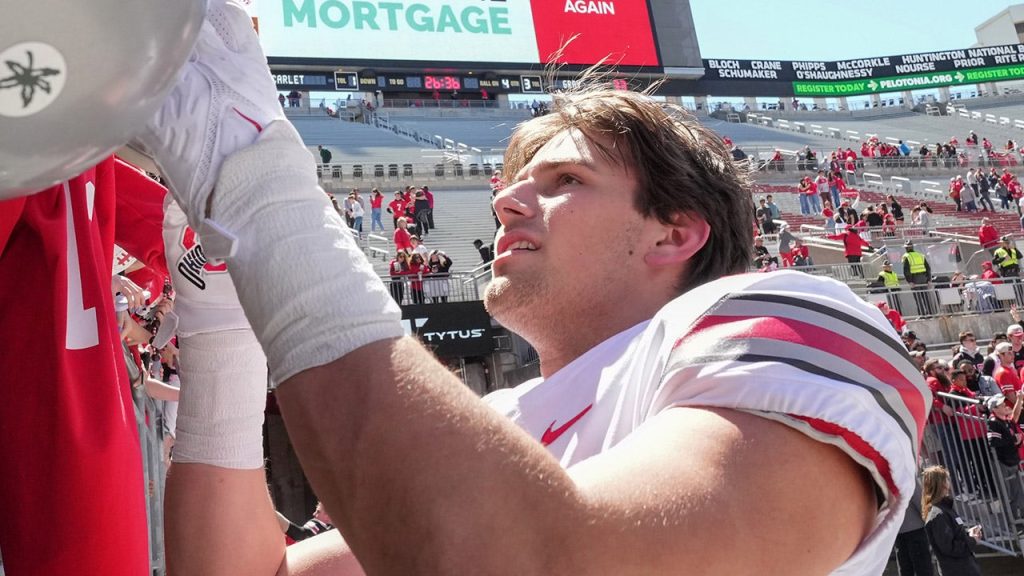The Ohio State Buckeyes are poised to contend for their first national championship since 2014, exhibiting a dominant performance throughout the inaugural 12-team College Football Playoff. Their journey to the championship game in Atlanta involved decisive victories over formidable opponents. They first dismantled the top-seeded Oregon Ducks in the quarterfinals, demonstrating their offensive prowess and defensive resilience. Following this triumph, the Buckeyes faced the Texas Longhorns in a highly anticipated semifinal matchup. Ohio State once again delivered a commanding performance, securing their place in the national championship game scheduled for January 20th at Mercedes-Benz Stadium.
While the team prepares for this momentous occasion, a cloud of controversy surrounds the dismissal of Caden Davis, a sophomore defensive end and prominent social media figure. Davis, a former walk-on, gained significant notoriety through his online presence, accumulating hundreds of thousands of followers across platforms like TikTok and Instagram. He frequently shared behind-the-scenes glimpses of the Ohio State football program, offering fans a unique perspective on team activities and facilities, as well as documenting his life as a student on the Ohio State campus. However, his social media activity ultimately contributed to his dismissal from the team, raising questions about the intersection of collegiate athletics and online persona.
The circumstances surrounding Davis’s dismissal remain shrouded in ambiguity, with university officials declining to provide specific details. The lack of transparency has fueled speculation and conjecture, leaving fans and observers to piece together the sequence of events that led to his departure. While his on-field contributions were minimal, never recording a tackle during his time with the Buckeyes, his social media influence was undeniable. This case highlights the increasing scrutiny placed upon student-athletes’ online behavior and the potential ramifications of their digital footprint.
One particularly noteworthy incident involved Davis’s misleading social media posts suggesting his presence with the team in Dallas for the Cotton Bowl semifinal against Texas. He shared photos that were later determined to be from the previous season’s Cotton Bowl game, a loss to Missouri. This misrepresentation raised concerns about the veracity of his online content and potentially contributed to the erosion of trust between Davis and the Ohio State coaching staff. The incident served as a reminder of the potential pitfalls of social media and the importance of responsible online conduct, particularly for individuals representing a prominent athletic program.
As the Buckeyes focus on their upcoming championship clash with Notre Dame, the Davis situation serves as a backdrop to their impressive playoff run. Notre Dame’s path to the championship game was equally impressive, featuring victories over the Georgia Bulldogs in the quarterfinals and a hard-fought win against Penn State in the semifinals. The matchup promises to be a thrilling contest between two storied programs vying for the coveted national title.
The 2014 national championship victory remains a significant milestone for Ohio State, marking the beginning of the College Football Playoff era. Their quest to reclaim the title in 2024 carries immense weight, representing the culmination of a season marked by both triumph and controversy. The Buckeyes will aim to overcome the distraction of Davis’s dismissal and maintain their focus on the ultimate prize, a national championship victory. Their performance on the field will determine their legacy, while the Davis saga serves as a cautionary tale about the complexities of navigating the intersection of college athletics and the digital age.

